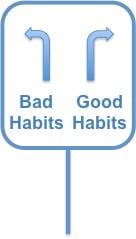 To be an effective safety leader, you need to be able to persuade your workplace to buy-in to your safety vision. You have to be able to cut through any confusion on safety and focus your organisation on what is important.
To be an effective safety leader, you need to be able to persuade your workplace to buy-in to your safety vision. You have to be able to cut through any confusion on safety and focus your organisation on what is important.
It's not just those working on the floor that you need to convince, but also senior management and the board.
Throughout time, revered leaders were those who were masters at communicating. JFK, Martin Luther King, Winston Churchill and Gandhi were all experts at formulating their own vision and then communicating it with such congruency and authenticity that it was able to influence how the masses acted. To this day, their respective legacies continue.
As Anthony Robbins says in the book, Unlimited Power, great leaders change the world through their communication power.
As you know, it's not enough to provide people with information. Getting people to take action is what separates an ordinary safety professional from a brilliant one.
When it comes to communicating about safety, you have less than one minute to catch the attention of your workforce with your safety messages.
Do you know what to say, or write, in those first 60 seconds?
You’re staff are drowning in safety rules and regulations, yet are starving for wisdom.
They need someone to cut through all the noise and communicate how safety information applies to their lives. They’re screaming for someone to make safety meaningful. And guess what? That person is YOU.
Here are 10 safety communication skills you need to learn, in order to motivate your workforce towards safety excellence.
- Create sticky messages - An often overlooked role of the safety professional is to critically think about what the safety information is highlighting and then communicating it in such a way, that people can understand what it means and how it is relevant to them. A superstar safety leader is able to shine a light on relevant safety information and help people see what the dangers are and what they need to do to keep safe. Then, that message needs to inspire action. Yet, so many safety professionals write and talk about safety in such a way that's confusing and obscures how that information relates to people's lives.
- Written communication skills - Being able to write a convincing safety campaign, is in the realm of copywriters. Yet, a safety professional needs to know how to make the month's safety theme an interesting topic of discussion. It's really important that safety professionals learn some basic marketing skills, to better influence staff with email newsletters and posters. This means having an understanding of what titles to use, how to write targeted messages and to avoid obscuring information with unnecessary padding.
- Run a high performance safety meeting - Running a safety meeting at a high performance level means getting everyone to come up with safety solutions, having open safety discussions and ensuring action is taken. Learn how to be an expert in running a safety meeting where everyone collaborates and action is taken.
- Sharing information - Companies that are great at safety have supervisors and safety staff that freely share safety information. For example, this means if they saw an article in the paper about a safety accident that involved the same equipment at their premises they would use that as an opportunity to discuss risks. It means passing on information from production. And it means giving everyone the best chance to do well in their jobs from a safety perspective. One of the ways Alcoa improved their safety record back in the late 1980's was to share safety information in real time to all of their sites worldwide (in fact, they were the first company to use email for corporate purposes).
- Be a safety curator - In addition to freely sharing information, you are also the main safety resource. This means you need to be able to locate and track down any safety information that is called upon at a moment's notice. In the book, Safety Culture, by James Roughton and Nathan Crutchfield, it is mentioned that being able to accurately curate all safety information means being relied upon for answers. This increases the potential that people will see you as knowledgeable and will be more likely to take on board your suggestions. It will expand your safety influence and ability to transform the safety culture.
- Safety conversation skills - Most professions need people with great verbal skills. When it comes to safety, it's integral that safety professionals have the skills to encourage people to openly discuss issues in safety meetings, but also the ability to be able to initiate a difficult safety conversation. You need to know a variety of approaches to talk to people about improving their safety habits.
- Be friendly, be a networker - Once you've created your safety message, the next step is to then disseminate safety information in a timely manner and quickly, throughout an entire organisation. Safety professionals need to the friendliest person in the building. They need to get out and mingle with everyone. And I mean, everyone! You need to be able to influence the leadership team to enable the right changes to occur on safety issues and you need every other co-worker to listen to you when you talk about safety. It's really important that you are interested in others and that they know you care. This enables you to build up a strong network, so that any message you send out gets everyone's attention.
- Embrace social media - Learn how to use social media to connect with your peers. Ensure you have a strong understanding of how social media works, particularly within your organisation. Your effectiveness will be determined by how quickly you're able to get out a safety messages and how well it is received. Social media is another communication tool that will improve your influence skills.
- Encourage two-way communication - Always follow up your written or verbal communication with feedback. Get out of your office and onto the floor to find out how your new safety processes and your safety communication are performing. By finding out the responses you are getting with your communication, you'll be able to change your future communication style so that it hits the mark. While also improving your safety processes.
- Tailoring your communication for the right audience - You could almost be forgiven if you think a safety professional needs to have an almost Jekyll and Hyde persona. Your influence skills need to reach different levels in the company from those with minimal school education right up to the CEO. Learn to change your communication style so that it matches the style of the receiver.
Your level of commnication mastery will determine your level of success both in your professionl life, but also your personal one.
As well as knowing all of the safety regulations, you need to have the skills to synthesise diverse information and re-package it, so that people can understand it. It means being able to connect with others, collaborate on projects and influence your co-workers to meet safety goals. But overall, it's all about getting people to take the right actions.

 To be an effective safety leader, you need to be able to persuade your workplace to buy-in to your safety vision. You have to be able to cut through any confusion on safety and focus your organisation on what is important.
To be an effective safety leader, you need to be able to persuade your workplace to buy-in to your safety vision. You have to be able to cut through any confusion on safety and focus your organisation on what is important.
